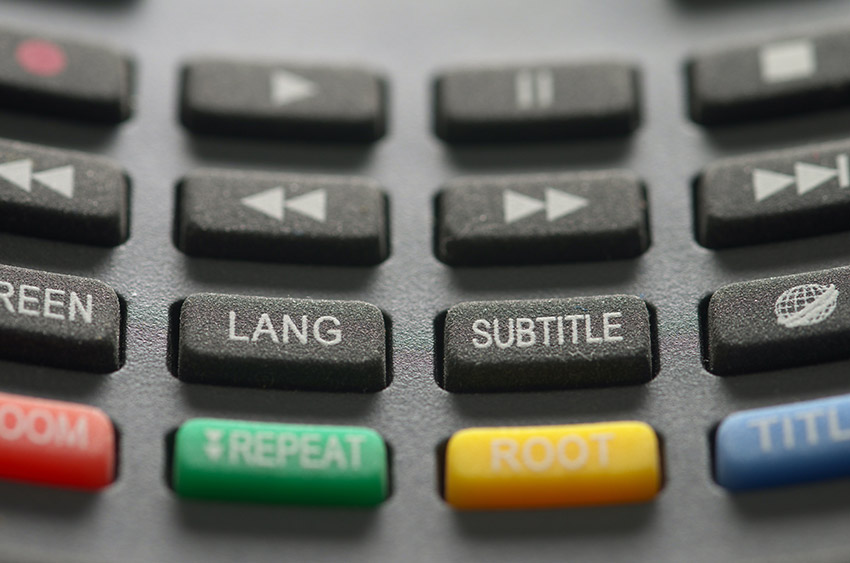TV for really everybody
This is an everyday routine: turn on your TV and get busy with your chores without making any effort to catch the information from the screen. You can hear it, you can see the image, you can switch to any other channel or TV service. But what about those who can’t act like this? How people who have problems with sight or hearing can enjoy modern TV technologies?

Now people with disabilities are protected from discrimination on a legislative base. Countries all over the world adopt laws and acts to defend disabled and provide them with decent life and all the possibilities everyone has.
Some of modern technologies are aimed to ease lives of disabled. Let’s consider some of them that let people with sight, hearing or even movement disabilities use TV services.
Voice control
This technology is developing really fast. It can help nearly 39 million blind people and those with visual impairment to use and enjoy TV and different home appliances.
The user takes advantage of the convenience and easiness of use of TV-services with voice control. As well as for people with sight problems, this is crucial for elderly users. PWC conducted a survey on the regularity of the use of voice commands. The result showed that people aged 60+ utilize it as often as teenagers (53% and 57% of respondents, respectively).
Captions and subtitles
Subtitles provide a text alternative for the dialogue of video footage – the spoken words of characters, narrators and other vocal participants. Captions, on the other hand, not only supplement for dialogue but other relevant parts of the soundtrack – describing background noises, phones ringing and other audio cues that need describing.
Initially subtitles and captions were ‘hand made’, that is a person was decoding speech and manually adding text to the video. Today live subtitles using speech recognition technology deliver text on the screen along with video. Also, by introducing machine translation subtitles can be delivered in any language.
Adding subtitles to videos allows viewers to enjoy content, even without sound, or in situations with loud noise that may interfere with the video’s audio. Videos with subtitles have longer viewing times, which increases watch time and video shares.
Audio description
If someone is finding it difficult to watch your favourite television programmes or films, TV service owner can enable audio description. Audio description is additional commentary that explains what’s happening on screen. AD describes body language, expressions, and movements, making the program clear through sound.
One of the highest levels of audio description on TV is found in the United Kingdom: in 2018 more than 150,000 hours of television were broadcast with audio description in the UK - a big win for those who are blind or have sight loss. The same year the first audio descripted ad was released, it was a Fairy liquid promo.
Sumaira Latif, Accessibility Leader in P&G pointed at audio advertising relevance for brands: “By 2020 there's predicted to be 2.25million blind people across the world. That's an obvious audience who shave and wash their hair like everyone else,” she said.
Eye-controlled TV
In 2019 US cable giant Comcast announced a new feature that enables people with physical disabilities to change the channel, set a recording or search for a show using only their eyes. It is a web-based remote for tablets and computers that pairs with an existing eye gaze system.
Tom Wlodkowski, Vice President Accessibility at Comcast, commented: “When you make a product more inclusive you create a better experience for everyone and we’re hoping our new X1 feature makes a real difference in the lives of our customers.”
There are a lot of people with different disabilities in the world, OTT TV is a business that must learn to adapt to different users, since the market is large. Moreover, it is a congenial and responsible attitude to society.
OTT TV has all the necessary technologies in its hands. These technologies enable the industry to include people with disabilities in global informational and cultural space.
